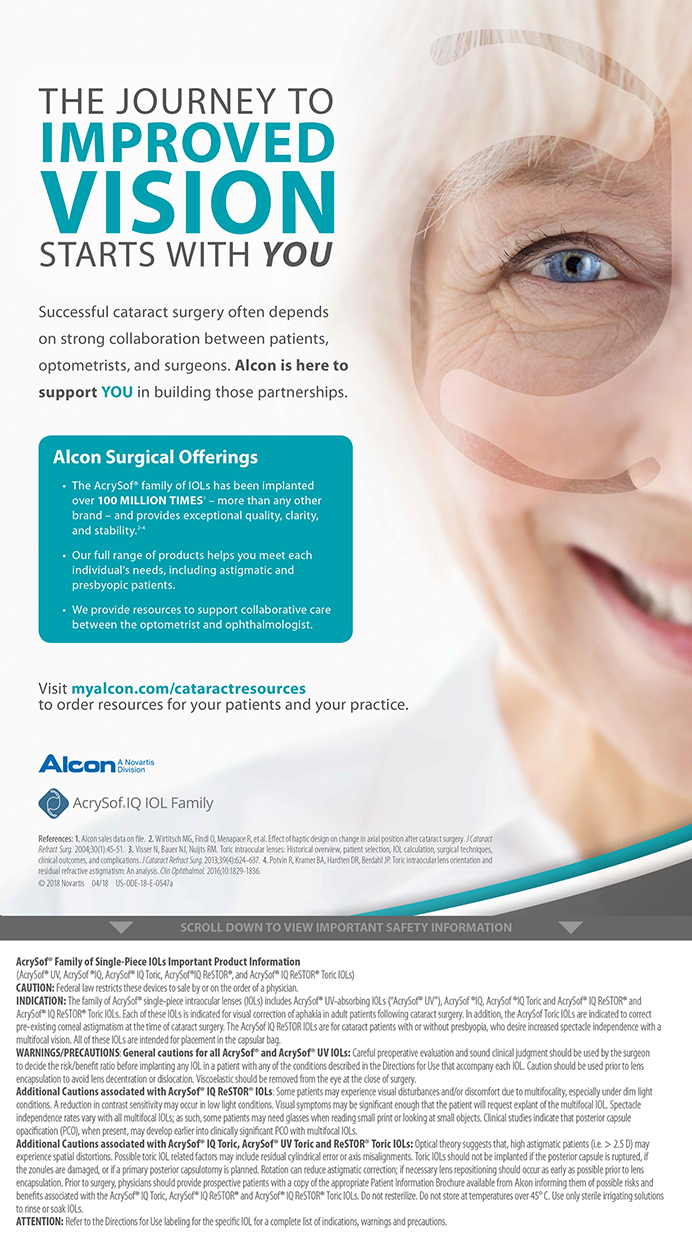As the aging population continues to grow, there is an increasing demand for eye doctors. It is imperative that optometrists and ophthalmologists work together to provide care for all these patients. In this manner, the care is well coordinated and seamless, and patients can feel confident that everyone involved is providing the best for them. At Professional Eye Associates in Dalton, Georgia, our team of four ODs and two MDs share patient care on a regular basis, and we follow these four keys to successful collaborative care relationships.

KEY #1: THOROUGH COMMUNICATION
Communication is the foundation that allows our practice to run smoothly. Without effective communication, our efficiency is limited and we risk compromising the quality of care for our patients. The ophthalmologists and optometrists in our practice meet every month to discuss interesting or challenging clinical cases, review and reinforce the things we are doing well, and think critically about how we can improve our processes. We also talk regularly throughout the week to update each other on mutual patients, meet to discuss protocols, or ask for a second opinion on a patient’s condition. Good communication helps us deliver a consistent message to our patients. When patients see an OD and then go to an MD, they find that both doctors are familiar with the case and agree on the diagnosis and treatment. If we were inconsistent, patients would lose trust and feel they weren’t getting the care they need.

KEY #2: MUTUAL RESPECT
To have a productive and healthy working relationship, an ophthalmologist and optometrist need to respect and trust each other’s clinical skills and judgment and be able to express that confidence to patients. When an OD in our practice refers a patient for cataract surgery or an MD sends a patient back to the OD for postoperative care, we have full confidence that the patient is getting the best possible care. When we express our confidence in one another to our patients, it makes them feel more comfortable and trust the care they receive.

KEY #3: A PATIENT-FIRST CORE VALUE
It helps when collaborating doctors have the same core values. In our case, the overriding value and most important goal is to provide excellent patient care in a caring way. We instill this to everyone in the organization. Consider how important it is for an optometrist to know when to refer a patient. Whenever the optometrist encounters a challenging question or complex case, the OD and MD discuss the case and the potential need for referral. It’s a team process. We hear of instances where an optometrist is managing a difficult case that is not responding to treatment. Sometimes delayed referral to the ophthalmologist can affect patient outcomes. Because we put our patients first, we refer patients immediately for the proper care without hesitation.

KEY #4: TEAMWORK
Ophthalmologists and optometrists play important but different roles in patient care, and those different roles make the team stronger. At our practice, optometrists are able to practice at the highest level, managing all conditions within their scope of practice. This allows the ophthalmologists more time to perform surgery and manage complex cases. We communicate this team approach to patients so they understand the intent and feel comfortable seeing any of the doctors. For example, when some patients are attached to their surgeon, we explain that stable patients see the optometrist, but if they ever have an issue that requires more intensive care, they will have immediate access to the ophthalmologist. Patients have excellent access to care, and we emphasize the fact that all the doctors in the practice are very skilled and perfectly capable of providing a high level of care to our patients.







